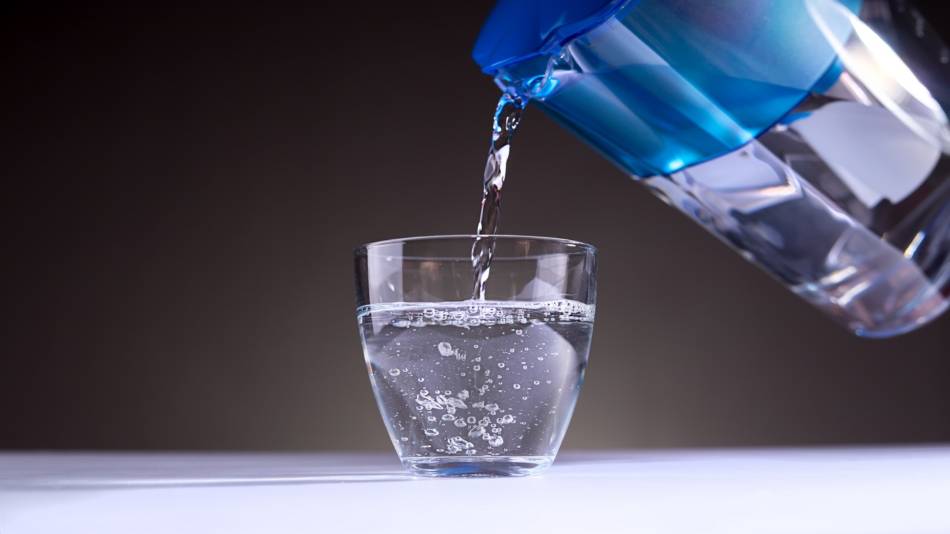
Answer:
As discussed in ConsumerLab's Water Filter Pitchers Review, plastic pollution in drinking water is a growing concern. Recent studies have found much of the world's tap and bottled water to be contaminated with small bits of plastic known as microplastics. For example, a study of tap water samples from 14 countries including the U.S. found man-made particles in 81% of the samples tested, and the annual intake per person of microplastic from tap water was estimated to be 4,400 to 5,800 particles. Water samples contained an average of 5.45 particles (fibers and fragments, although mostly fibers) per liter — but samples from the U.S. had the highest average for any for any country -- 9.24 particles per liter. When these water samples went through a filter that could remove particles as small as 2.5 microns, 41.5% of the samples were still contaminated (Kosuth, PLoS One 2018).
ConsumerLab's tests of popular countertop water filter pitchers found there was wide variation in their ability to remove microplastics from tap water. The tests showed one water filter removed all detectable microplastic particles, while two others reduced particles by 80% and 36%, respectively. Surprisingly, one pitcher increased the number of microplastic particles per liter of water to 437.4 particles — a 1,206% increase.
See the results, including how well the pitchers filtered other substances, such as toxic heavy metals, chlorine and dissolved solids (which can affect taste), and CL's Top Pick, in the Water Filter Pitchers Review.
Also, be aware that tap water is not the only source of microplastics you may ingest. The total annual consumption of microplastics per person, from all food and water, is estimated to be between 39,000 to 52,000 particles. Bottled water generally contains more microplastic than tap water; if one were to drink only bottled water, this could contribute an additional 90,000 particles per year (Cox, Environ Sci Technol 2019). (For more about bottled water and microplastics found by brand, see our related answer.)
Join today to unlock all member benefits including full access to all CL Answers and over 1,400 reviews.
Join NowAlready a member? Sign In Here.
Join now at www.consumerlab.com/join/

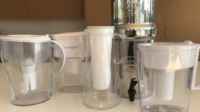
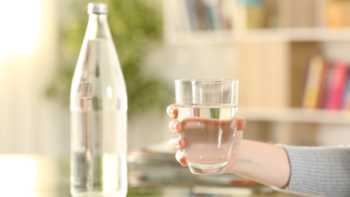
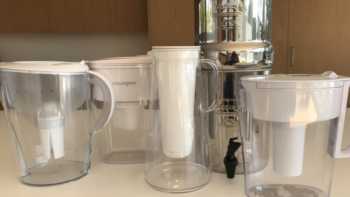





Claire21398
December 11, 2024Distilled is the way to go. I recommend the stainless steel unit CO-Z. I have 2 and the cost is around $90. I distill a gallon every 2 days. It may be a little more work but if you use the food grade citric acid with a brush the disgusting stuff left behind on the bottom comes right off. If you unplug it a few minutes early you don't even need to do that cleaning. I have been using countertop distillers since 1990 when Sears first introduced them. They do remove minerals as well so you need to get them elsewhere. They last for years.
Reply to this post…
elleprior@reagan.com
November 26, 2024When we swallow some daily vitamin supplements are we ingesting more micro plastics from their plastic casings?
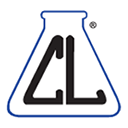 ConsumerLab.com
ConsumerLab.com
November 26, 2024No, the shells on capsules and softgels are not made of plastic, but are typically either gelatin or vegetable-based, such as modified forms of cellulose (which comes from plant cell walls).
Reply to this post…
Michael11462
November 23, 2023Do you have any information on whether faucet filters work as well as pitcher filters? I'm thinking of switching from PUR pitcher to their attachable faucet filter.
 ConsumerLab.com
ConsumerLab.com
January 06, 2024We have not tested any faucet filters but, in general, they are thought to work slightly better than pitchers. See our CL Answer about PFAS for information about how pitchers, faucet filters, and other point-of-use water filters compare for removing PFAS from water based on research conducted in North Carolina: https://www.consumerlab.com/answers/toxic-pfas-chemicals-in-dental-floss/pfas-dental-floss/#effectiveness-of-point-of-use-water-filters
Reply to this post…
David11396
October 02, 2019Many get water from an in store R.O. water machine which should get everything out. We also reuse the plastic jugs over and over. Please test this process as it is used by many.
Kenneth11397
October 13, 2019Also re-use my own plastic jugs via a Reverse Osmosis in-store water filtration system. Interested in Consumer Lab's comments & insights on this !
 ConsumerLab.com
ConsumerLab.com
October 15, 2019Hi Kenneth - We aren’t aware of studies on microplastic exposure from plastic jugs, but, based on this study with plastic water bottles, it might be best wipe jug tops clean if repeatedly opening-closing with screw-on plastic caps.
Reply to this post…
Tim and Joe11391
September 05, 2019and oddly, both of these company's filters then filter the water into a... wait for it... plastic pitcher.
I own a countertop model water distiller. Bought it in 1995 while training for marathons (one drinks a LOT of water during such training), has worked flawlessly for me ever since - thousands of gallons have been purified in that machine.
But now I wonder... do microplastic particles evaporate with the steam? and if so, will they be caught in the carbon after-filter?
Reply to this post…
Ronnie11389
September 05, 2019The Aquasana Clean Water Machine website says that it filters out particles above .5 microns.
Nancy11390
October 06, 2019.5 microns is 500 nanometers. The real problem is not micro plastics, which there are many filters that will take care of much of that, it is the nanometer sized particles that are the real problem. They are absorbed through your skin, the seriousness of which has been difficult to assess. This is only a recent discovery, so while filtering down to ,05 microns (50nanometers) is awesome, don't get too comfortable thinking you are safe.
Reply to this post…
Ronnie11383
September 02, 2019Aquasana Clean Water Machine, which I bought because water filtered by PUR filter had funny taste to me, is a powered countertop filter, meaning you plug it in and it forces water through a filter which is supposed to get better filtration than "passive" filters.. It is certified to meet both ANSI Standards that PUR meets plus the new standard (401 I think) for removing drugs thrown away into water sytsems that get into drinking water. I a going to look up the micron level for particulates.It does seem to me to be the best countertop filter I have had..
Reply to this post…
Maia11374
June 15, 2019FYI: Berkey responded
" The microplastics have not been tested for so we are not able to say if they are removed or reduced or not, however the pore structure size of the microplastics are around 10 and the Berkey filters pore structure will trap anything larger than a 2 so they are more than likely being removed but we can't say for sure. Below is a list of all of the contaminants that have been tested for and what is removed and reduced and to what level. If you have any more questions please let us know."
Kindest Regards,
Jennie
Reply to this post…
Charles11367
June 12, 2019How well would a more expensive above-counter filter, such as the Berkey, filter out these particles?
Sharon11368
June 15, 2019Berkey states they remove viruses down to 24-26 nanometers which would be smaller than the microplastics, so logic would lean toward yes, Berkey does filter out microplastics. The other side of that is that I have not seen any studies showing the black Berkey filter and it's effect on microplastics. Until that study is done, I don't think there is a black and white answer. I have seen Berkey filter water from a muddy creek and produce a clean drinkable product; however I sure didn't have a way to test for microplastics.
Reply to this post…
James R11353
June 12, 2019I recommend a reverse osmosis unit for many health reasons yet the neatest is that over time a gallon of R/O filtered tap water costs about $0.10/gal. I use a glass 3L jug to store the water avoiding plastic bottles.
Cat America
June 12, 2019James R18204, is there any certain brand of RO filter that you recommend? I've been thinking about getting one installed.
Laura11358
June 12, 2019Consider AquaTru. It uses three different kinds of filtration including RO, doesn't require installation, and has great customer service.
David11359
September 04, 2019How could this good, that unit is made of plastic?
Don11361
June 13, 2019We have been very happy with this RO + filters system, but it ain't cheap ($252 on Amazon) and it does require undersink installation.
We have no financial interest in the product or the company.
Home Master TM Undersink Reverse Osmosis System .
Stanley11357
October 13, 2019We use I clear, water tastes great.
Carol11360
October 13, 2019I currently have an Ecosoft 5-stage system, because it was cheaper than replacing all 5 of the iSpring filters when it became time to do so. I liked the idea of having a new storage tank too. Got both from Amazon.
The most expensive part of getting one was the handyman's time. Mine knows his way around such things but both systems were buggers to get installed. You'll also need a lot of space for the tank and the filters under the sink.
As much as I consider an RO filter a necessity, if my filtered water has been sitting out for a day, it will have an off taste. Nothing as bad as tap water, but previously opened bottled water always tastes clean even weeks later. I guess microplastics don't have a taste to them fresh or stale.
Wendy11354
August 15, 2019We had our well water tested before and after RO filtered and arsenic was removed. Was storing in plastic, will switch to glass.
Reply to this post…